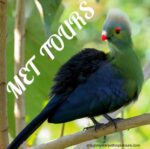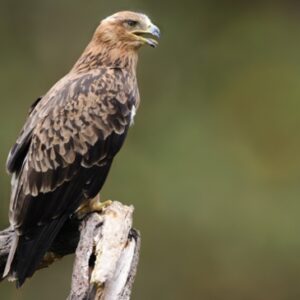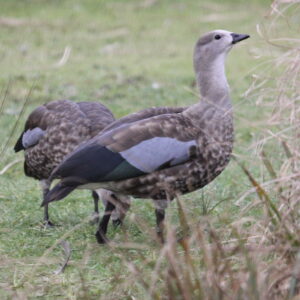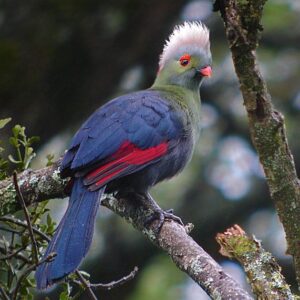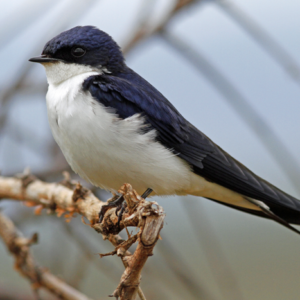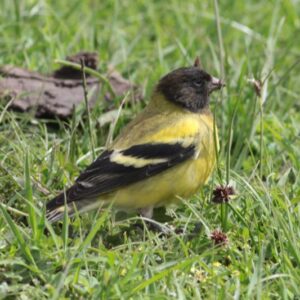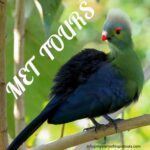Day 1
Day 2 On arrival at Addis, we are welcomed by local staff and check in to our modern, comfortable hotel.
Later we will make a visit to Gefersa Reservoir. On the north-west edge of the capital, this is a fine site for many of Ethiopia’s highland birds, including several national and regional endemics. Species we may see here include blue-winged goose, wattled ibis, Erlanger’s lark, tacazze sunbird, groundscraper thrush, Ethiopian siskin, moorland chat and rusty-breasted wheatear.
Accommodation: The Swiss Inn Nexus Hotel, 2-nights
Day 3 Derive to Debre Libanos
This morning we drive to Sululta Plains, where around seasonal ponds we hope to see endemic spot-breasted lapwing, blue-winged goose and Abyssinian longclaw, accompanied by migratory waders including Temminck’s stint, little stint and wood sandpiper.
We continue the short distance to Debre Libanos. Along the cliffs of the Jemma Valley we have good chances of seeing lammergeier, Rüppell’s vulture, Verreaux’s eagle, white-billed starling, Rüppell’s robin chat and Erckel’s francolin. The endemic gelada baboon is common here and we are sure to delight in watching gelada families graze and play.
In the forest surrounding Debre Libanos Monastery, endemics and near-endemics such as white-cheeked turaco, banded barbet, white-backed tit and Abyssinian woodpecker may be seen.
We return to Addis Ababa for the night.
Day 4 and 5
Drive to Awash NP
This morning we head north through the Rift Valley to Awash National Park, which is justly famed for its wildlife: some 460 species of bird have been recorded in its diverse landscapes, in addition to many mammals.
Grassland here is home to charismatic mammals including beisa oryx and the beautiful Soemmering’s gazelle. Thorn scrub is no less exciting as it supports the graceful lesser kudu, clumsy warthog and diminutive Salt’s dik-dik. Olive baboons are common, while in rocky areas the magnificent hamadryas baboon may also be found.
Perhaps even more remarkable are the park’s birds. Bustards, from diminutive buff-crested and white-bellied to towering kori, are commonly seen in the park’s lightly wooded grassland, as is a range of raptors, from majestic tawny eagles to pygmy falcons, as well as gabar and dark chanting goshawks and strange bateleurs.
During our two-day stay we will adapt our plans to reflect recent local advice on wildlife, but, in order to see a range of birds and mammals of grassland, thorn scrub and rocky escarpment, we will include diverse locations.
Accommodation: Awash Falls Lodge or Doho Springs Lodge, 2-nights
Day 6 Drive to Awassa
Today we travel south through the Rift Valley to Lake Awassa. Driving through farmland and light acacia scrub we may see lilac-breasted and purple rollers, speckled and blue-naped mousebirds, Abyssinian ground hornbill, augur buzzard, dark chanting goshawk and colourful starlings, including superb, greater blue-eared, wattled and Rüppell’s.
Highlights along the lake shore by our hotel may include pink-backed pelican, African pygmy goose, hippo and African fish eagle, though common birds such as white-faced whistling-duck, spur-winged lapwing and hamerkop will be no less appealing.
Accommodation: Haile Resort, 1-night
Day 7 -9 Drive to Bale
We spend three nights in the remarkable Bale Mountains National Park, with two full days spent exploring its three distinct biological zones: the misty, moss-laden Harenna Forest in the south, the Afromontane wilderness of the Sanetti Plateau in the core of the park and, to the north, the juniper forests of Dinsho and the Gaysay Grasslands.
Bale Mountains National Park is one of the jewels of Ethiopia’s natural heritage. The park covers more than 2,000 square kilometres and rises steeply from cloud forest at 2,000 metres above sea level to Afromontane meadows above 4,000 metres. It is home to a quarter of Ethiopia’s endemics, and to a wealth of other mammals, birds and other wildlife.
Among our many target species here are Ethiopian wolf, Starck’s hare, Menelik’s bushbuck, mountain nyala, giant root rat, Bale Mountain monkey, blue-winged goose, spot-breasted lapwing, Rouget’s rail and wattled crane.
Day 10-11 Bird Watching around Negele
Nestled where the Harenna Forest of the Bale Mountains tumbles onto the plains of East Africa, the area around Negele is home to Ethiopia’s most famous and beautiful endemic bird, Ruspoli’s turaco. In addition to the startling crimson wings which characterise its genus, this gorgeous and highly restricted bird sports a unique pink crest which fades to white at its tip. We will make every effort to see it here.
Negele’s other star bird is the Liben lark whose last tiny population clings on in grassland near the town. These open plains are also good for regional endemics such as white-crowned starling and Somali short-toed lark and Eurasian migrants including both pallid and Montagu’s harriers.
Accommodation: Turaco Hotel, 2-nights
Day 12-13 Bird Watching Around Yabello
This morning we make the long journey west to Yabello Wildlife Sanctuary. The star bird here is undoubtedly Ethiopian bushcrow. Happily for us this noisy and social bird is common within its very restricted range. Another quite easy bird here, though it is found nowhere else on Earth, is the lovely white-tailed swallow.
Many beautiful birds here are characteristic of the acacia forests of eastern Ethiopia. These include golden-breasted, Shelley’s and white-crowned starlings, Boran cisticola, bare-eyed thrush, and the subtly beautiful red-bellied parrot.
Both the Burchell’s race of the plains zebra and the floppy-eared Grévy’s zebra are still seen in Yabelo, as well as Guenther’s dik-dik and Grant’s gazelle.
Accommodation: Yabelo Motel, 2-nights
Day 14-15 Bird Watching Around Langano
This morning we leave Yabelo, driving north into the Rift Valley and to Lake Langano. Birds we may see along the route include striped kingfisher, purple roller, Rüppell’s and vitelline masked weavers, banded barbet and Nubian woodpecker.
The reddish-brown water of Lake Langano in Ethiopia’s Rift Valley supports abundant birdlife. African fish eagle, great white pelican, Senegal thick-knee, spur-winged lapwing, red-billed oxpecker, bare-faced go-away-bird, yellow-crowned parrot and black-winged lovebird are just some of the many beautiful birds which are found around our lodge.
In addition to our exploration of the lovely shore of Lake Langano, we may make a visit to a neighbouring protected area. Though tiny, Abiata-Shalla National Park embraces two very distinct lakes. One of them, Lake Abiata, is to Ethiopia what Lake Nakuru is to Kenya: shallow and saline, home to thousands of greater and lesser flamingos, black-winged stilts, Cape teal and wintering black-necked grebes.
Day 16
Early this morning we take a last walk along the shore of Lake Langano, in search of its abundant birds. We then make our way up the western escarpment of the Rift Valley to Addis Ababa, in preparation for our flight home late this evening.
Day 17 Departure.
-
DepartureAny where
-
Included-Services of an expert leader-Transfers-Accommodation-All meals-Guided activities
-
Not Included-Alcoholic Beverages-Gratitude
-
Maps
Contact Info
Ethiopia
email- mysteryethiopiatours@gmail.com
info@mysteryethiopiatours.com
andy@mysteryethiopiatours.com
Addis Ababa, +251-912065512
USA
1-703-454-4701
Mon – Sat 8.00 – 5.00 Sunday CLOSED
Newsletter
